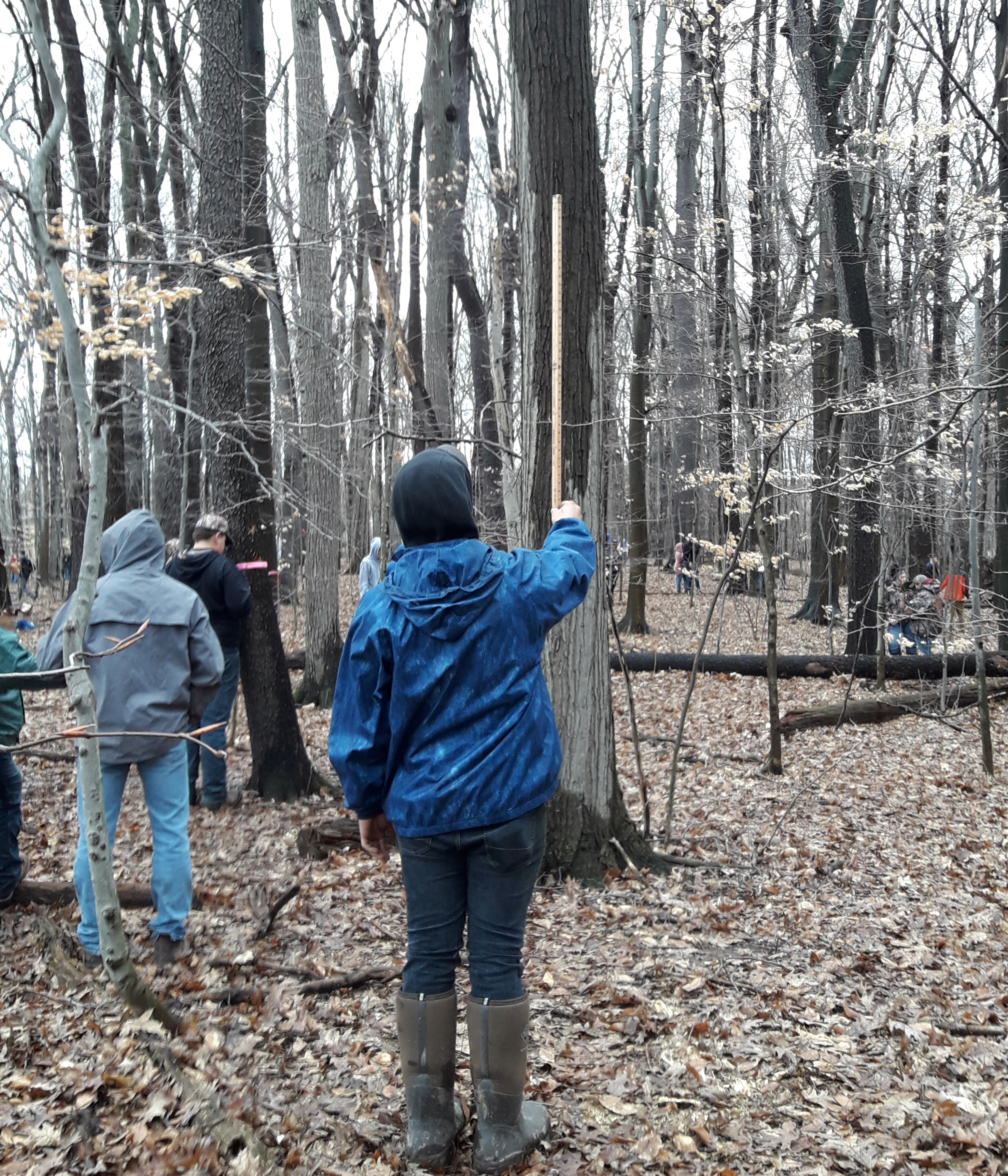One size does not fit all - MSU helps high schoolers build Biltmore sticks with recycled wood
David MacFarlane teaches a course at Michigan State University (MSU) called “Forestry Field Methods,” where students learn the basics of tree measurements, forest navigation and forestry data collection.

I teach a course at Michigan State University (MSU) called “Forestry Field Methods,” where students learn the basics of tree measurements, forest navigation and forestry data collection.
As part of this course, I have been teaching students to use a Biltmore stick. Biltmore sticks are about the size of a yardstick and use the principle of similar triangles to measure the girth of trees, a key feature that is measured as the tree’s diameter at breast height. The tool was developed by Carl A. Schenck, who established one of the first forestry education programs in the U.S. at the historic Biltmore Estate.
The stick’s accuracy depends on the user holding it the correct distance from their eye. Factory sticks are set for a reach of 25 inches, roughly the average for an adult male. When I started teaching diverse groups of students to measure trees with Biltmore sticks and grading them on their accuracy, I found that some students had trouble with the tool because of their reach (I had a student with a 17-inch reach, for example). To equal things out and create a fun and educational project, I now have every student make their own custom reach Biltmore stick.
We start with stick “blanks,” which are basically a yardstick with no markings. These are produced by Dan Brown and his associates at the MSU Shadows Program, which highlights urban wood recovery by making high-quality wood products from trees that are removed from campus for safety or other reasons.
Students then plug their reach into mathematical formulae which tells them how to draw the graduations on the stick to make it customized to work best for them. For years, this has been a rewarding learning activity for college students at MSU. A colleague of mine, Justin Kunkle, and I talked about further extending the “reach” of this activity to high school students.
This year, I created a “Build you own Biltmore stick” exercise for high school teachers involved in the Future Farmers of America (FFA) Program and hosted two workshops at the Innovation and Best Practices for Teaching and Learning Fall PDI 2019 conference. For years, I have been running the Future Farmers of America (FFA) Forestry Skills Contest and Career Development Event.

This is a big contest where high schools with FFA programs come to campus to participate, with the winning school representing Michigan in the national contest. The main tools teams use are Biltmore sticks. With the help of two of our Forests Forever Scholars (Alex Love and Ryan Beachnau) and complimentary sticks from the MSU Shadows Program, I taught the teachers to make their own sticks.
We now have requests from 30 schools for almost 1,000 sticks. That means around 1,000 Michigan high school students, of all shapes and sizes, will be building custom-reach Biltmore sticks with recycled urban wood.



 Print
Print Email
Email

